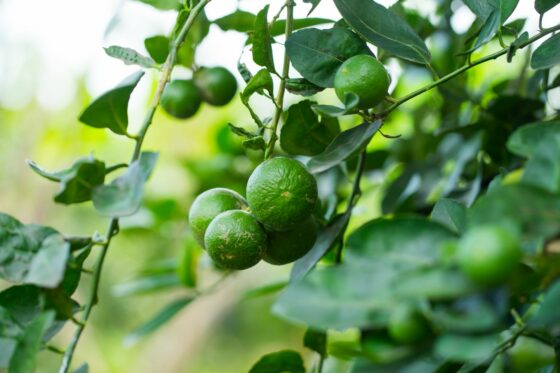Planting, caring for & overwintering limes
Limes are popular in refreshing summer drinks, but caring for lime trees – as is often the case with citrus plants – can be tricky. But do not let that put you off, with a little TLC and the right know-how, lime plants can be a wonderful addition to your garden or balcony.

The lime tree originally comes from the tropics and subtropics, so it is guaranteed to get a chill outdoors during the winter months in our part of the world. Generally, a lime tree likes it warm and sunny. But what else is important when it comes to planting limes? And can you grow your own limes at home? Here we will answer these questions and many more.
Contents
Planting limes
Due to its origin and the chilly temperatures in our winter months, your lime tree will have to be planted in a pot. If it is grown in a garden bed, the plant will freeze. Planted in a pot, you can easily move the lime tree to a warmer environment for overwintering.
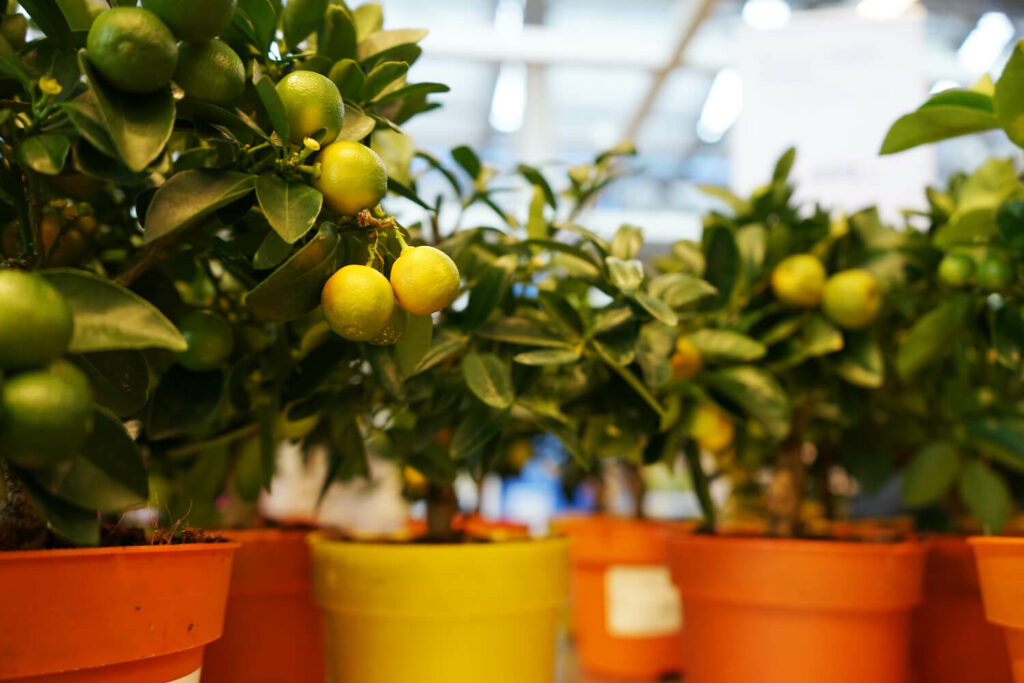
The right location for a lime tree
The ideal location for your lime tree is as sunny as possible. Limes require even more heat and light than lemons or oranges. The lime plants convert the sun’s energy into the flavour of their fruits, so the flavour suffers if it is in shade too often.
Location requirements of the lime:
- Sunny, warm location
- In summer, outdoors in the garden, on the patio or balcony
Tip: Lime trees do not like warm feet. If the roots get too warm, they stop absorbing water and nutrients. This means that the pot must not be exposed to too much sunlight so that it does not heat up. If you have an indoor lime tree, the underfloor heating should not be turned on in the winter months.
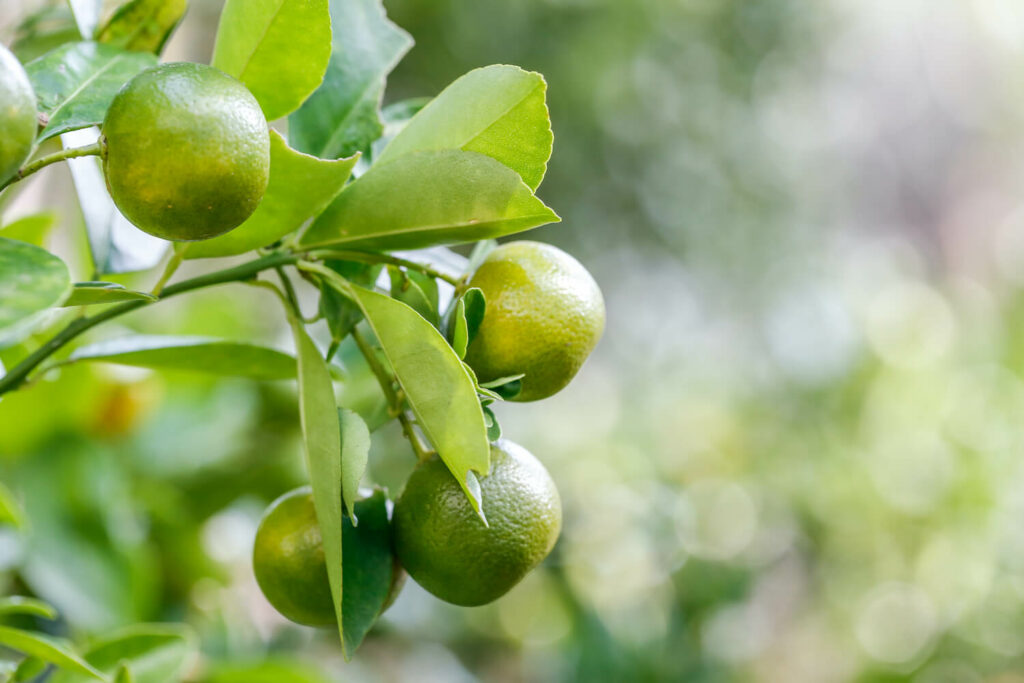
Growing lime trees in pots
We have already mentioned that the lime tree should be planted in a pot. To help keep the roots cool, choose a light coloured pot. Make sure it has drainage holes so that excess water can drain off easily. Before filling the pot with soil, add a layer of structural material for extra drainage. Although the lime loves moist soil, especially on hot days, waterlogging should be avoided at all costs. In addition to a slightly acidic soil with a pH value of 5.5 to 6.5, the quality and structure of the citrus soil is particularly important, as lime trees tend not to enjoy repotting. You can either use special citrus soil from the shops or mix your own. To do this, mix about 70 percent of a suitable soil, such as our Plantura Organic All Purpose Compost, with 30 percent crushed expanded clay or grit. The coconut fibres in this compost help to create a loose soil structure. It can store moisture, but also allow excess water to drain away quickly.

- Perfect for all your house, garden & balcony plants
- For strong & healthy plants as well as an active soil life
- Peat-free & organic soil: CO2-saving composition
Finally, after potting you can cover the soil with a mulch of pine bark – this protects the soil from drying out too quickly and has a slightly acidic effect when broken down, which is good for lime trees.
Can you plant limes from seeds?
Especially with the Mexican lime (Citrus x aurantiifolia), but also with all other lime species, you may come across seeds in a fruit. Some people wonder whether it is possible to propagate a lime tree with these seeds. The answer is yes – it is possible to grow a lime tree from a lime seed. However, there is no guarantee that these propagated plants will produce the same fruits. It is not uncommon for limes to contain seeds from so-called apomixis. These contain the same genome as the mother plant, so they produce clones. A lime plant only flowers and bears fruit after around 8 years, so it takes a lot of patience to find out whether this is the case.
Propagation by cuttings is also possible, but very tricky. Choosing the right soil is important. To support root growth, you should use a loose and nutrient-poor soil such as our Plantura Organic Herb & Seedling Compost.
Tip: Any type of lime propagation is challenging and requires a bit of skill and experience. So don’t despair if you don’t get it right the first time!
How to grow your own lime tree:
- Propagation with seeds: This method carries the risk of getting no fruit or inedible fruit. In addition, it takes about 8 years until the grown trees blossom and bear fruit.
- Propagation with cuttings: Take head cuttings with 15 – 20 cm and about 5 – 11 buds; remove leaves; put cuttings with 3 – 5 buds in growing soil; moisten the soil and cuttings; leave to take root under cling film at 20 – 25 °C. The first flowers can be expected after about 2 to 3 years.
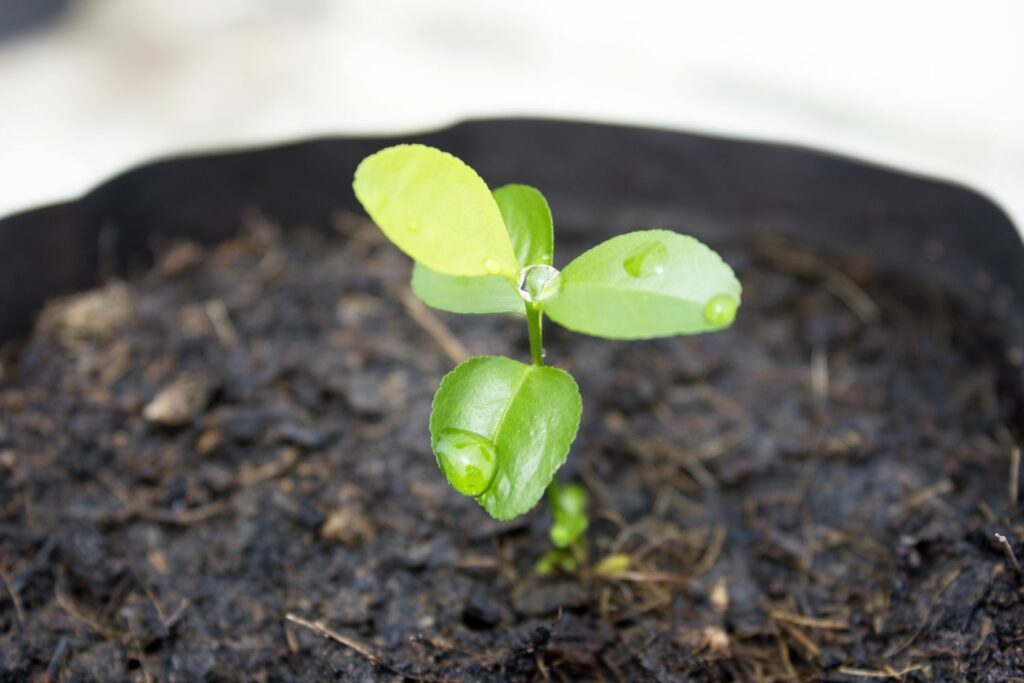
Lime tree care
To ensure your lime tree lives a long, healthy life and to get a rich harvest, there are a few important care steps to follow. Below we give you tips for repotting, watering, fertilising and pruning your lime tree.
Pruning the lime tree
Limes grow very slowly, so regular pruning is not necessary. Simply remove any dead branches, as well as water sprouts that often appear in summer. For a more compact growth, you can carry out an annual pruning in spring. As the lime blossoms and bears fruits on one-year-old wood, after removing the fruit, cut back branches to the point where a young side shoots branch off. Branches that grow too vigorously and vertically, as well as any that grow inward and cross with other branches, can be removed or trimmed. Always use sharp secateurs when pruning lime trees.

Watering and fertilising
The water and fertiliser requirements of the lime depend on its growth, which varies greatly depending on the weather. Water and fertilise as needed is the general rule here – water carefully and not too much. Rainwater is preferred for watering but tap water can also be used.
Lime trees are quite particular when it comes to fertiliser. It is best to use a specially adapted fertiliser such as our Plantura Liquid Citrus Food. This is ideally suited to the needs of citrus plants and can be applied quickly and easily when watering. During the main growth period from March to October, we recommend fertilising about once a week.

- Perfect for all citrus plants & Mediterranean plants
- Liquid fertiliser for healthy plants & aromatic fruit
- Quick & easy application - child & pet friendly
Tip: For very old lime trees that are only repotted rarely or not at all, apply granular fertiliser to the plant once a year that provides plenty of phosphorus. This is because liquid fertilisers often contain little or no phosphorus, as this can react unfavourably with other fertiliser ingredients. Our Plantura Flower Food, for example, is simply applied under the mulch material and watered into the soil. It will then break down slowly over at least three months, providing nutrients to the plant and improving the microbial health of the soil.
Repotting lime trees
Citrus plants such as lime should not be repotted too often, as they do not tolerate root damage well. For this reason, choose a new pot that is as large as possible. The time for repotting is when the pot is fully rooted. This is the case with younger limes roughly every two years. The best time to do this is in March, before the growing season. Again, make sure there is good drainage and inspect the root ball for health. Cut away any dead root material.
Step-by-step: How to repot lime trees
- Repot the lime tree when it is fully rooted
- Choose a container that is as large as possible
- Place a layer of drainage material in the bottom of the pot
- Mix potting soil with 30 % expanded clay
- Insert the root ball and straighten
- Fill the pot with soil
- Cover surface with pine bark
- Water well
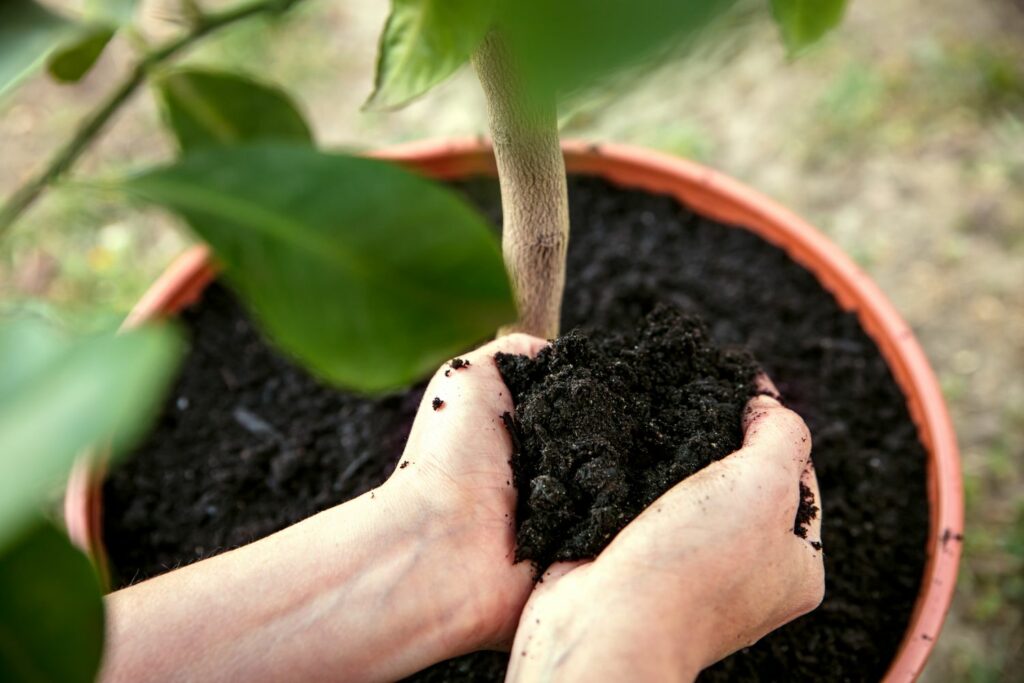
Lime tree pests
Citrus plants are particularly susceptible to pests such as spider mites (Tetranychidae), scale insects (Coccoidea) and mealybugs (Pseudococcidae) in the winter months. That is why you should keep a close eye on your lime plant, especially around this time.
Can lime trees survive winter?
No matter what kind of lime tree you have, they all have one thing in common: lime trees are not hardy! To overwinter the citrus plant, you need a warm, sheltered spot. The plant does not hibernate and needs as much light as possible in winter. Temperatures between 8 and 15 °C are optimal for successful overwintering. The warmer the winter months, the brighter they should be. This means that in places where there is a lack of light in winter, it should not be too warm either. If the balance of light and temperature is not right, the lime is at risk of losing its leaves. But don’t worry if this happens! With increasing warmth, light and the first fertilisation of the growing season, your lime tree will sprout new leaves in spring. Lime trees also require much less watering in winter and can stand slightly drier soil.
Caring for lime trees in winter:
- Temperatures of 8 – 15 °C are ideal
- Preferably warm and bright, or cool and dark
- Water occasionally
Tip: Unfortunately, our winters are often cloudy and dark. For this reason, plant lighting is a good idea, especially for key limes (Citrus x aurantiifolia).



















